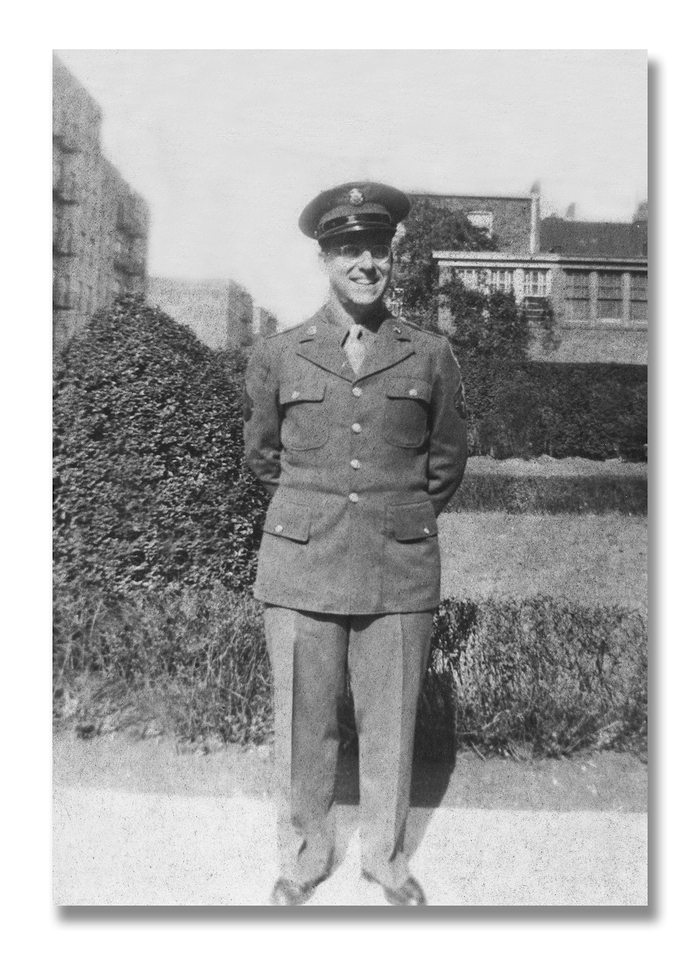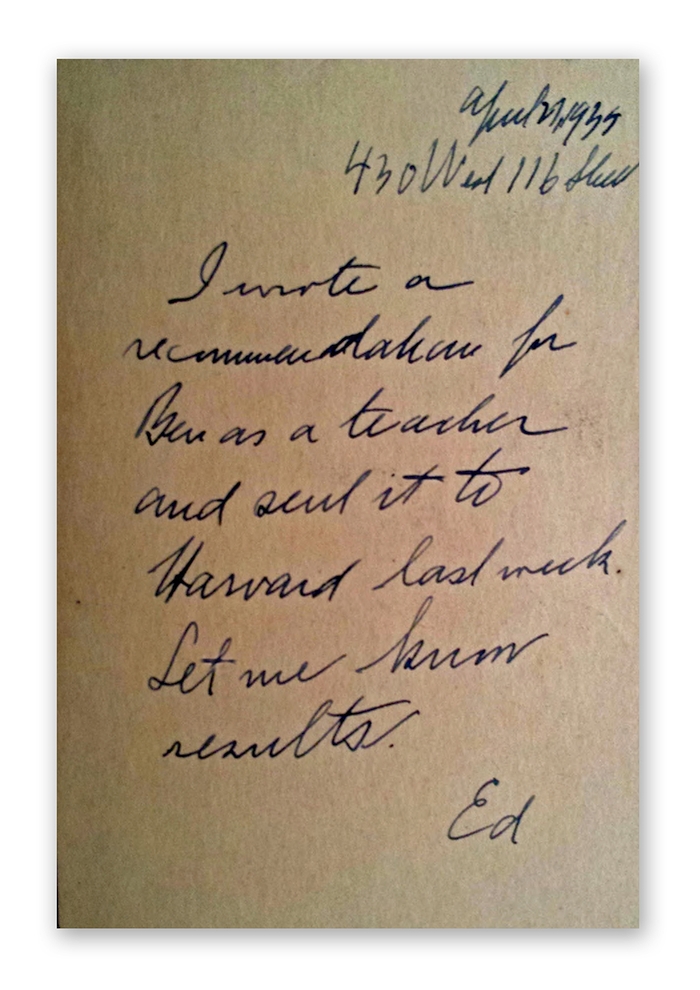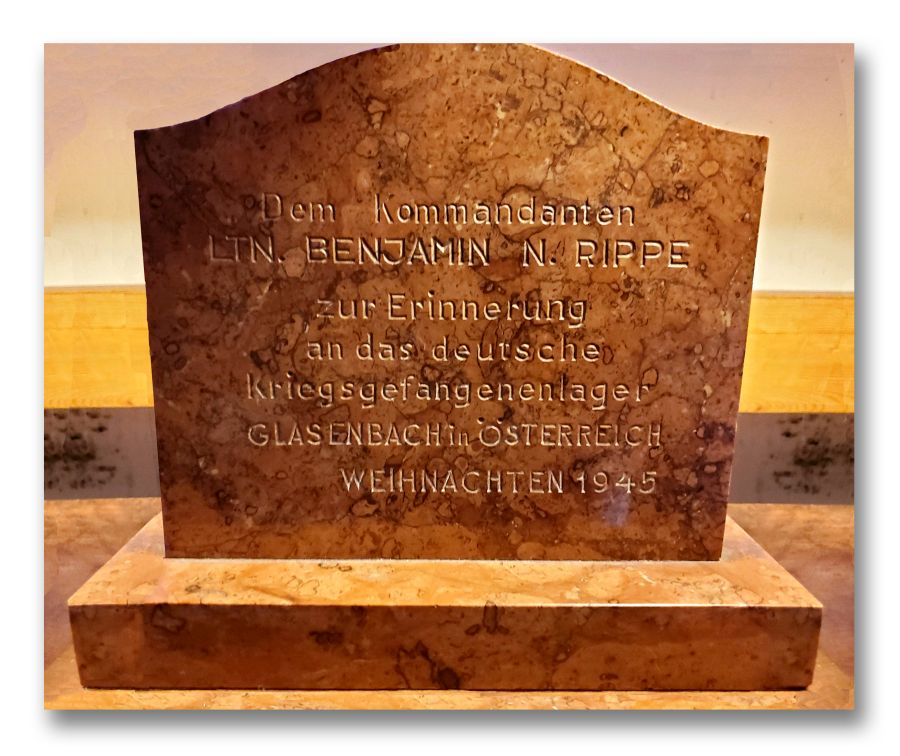A photograph of my cousin Lt. Benjamin Nathan Rippe (son of Maurice and Winifred
"Winnie" (Nathan) Rippe in New York City on October 24th, 1943 just before Ben
headed for his military assignment in Europe.
Ben was an inspiration to anyone that knew him. He was intelligent and
a thoughtful man and was my grandparent Blanche and Max's nephew.
Ben's active duty in the Army began on July 5th, 1942, soon after he
joined the U.S. Army in New York City. By 1946, Lt. Benjamin Nathan Rippe
was awarded 5 Bronze Stars, the European African Middle Eastern Campaign
Medal, the American Campaign Medal, the World War II Victory Medal
and the Meritorious Service Unit Medal.
Benjamin graduated in 1934 from Dartmouth, and in 1935 he earned a Masters
Degree from Harvard. In 1939, Ben Rippe graduated from the Brooklyn Law
School of St. Lawrence University, where he was the Editor-in-chief of the Brooklyn
Law Review in his last two years. He passed the New York State Bar in 1939. In
1943, Corporal Rippe was assigned to a department of Army Intelligence, assisting
in specific matters with a group of European artists emigrating to NYC, fleeing from
Nazi oppression.
Some of the notable artists that were involved in the project were Marcel Duchamp,
Max Ernst, Wassily, Kandinsky, Paul Klee, Fernand Leger and Piet Mondrian. In 1944,
Corporal Rippe was promoted to Composite Unit Commander and served in Europe
during the Normandy, Northern France, Ardennes, Rhineland and Central Europe
campaigns.
In late 1944, Ben was promoted to Lieutenant and began serving as a Provost Marshal.
Some of the duties of a Provost Marshal are handling investigations and incarcerations
of U.S. Army personnel. In 1945, Lt. Rippe served as the Commandant of a Prisoner of
War Camp in Glasenbach, near Salzburg, Austria. Glasenbach primarily held higher-ranking
German officers. Most prisoners were being processed through a form of de-Nazification,
such as it was. Ben continued on as Commandant after the war when it was converted
into a Displaced Persons Camp in Glasenbach, near Salzburg, Austria. The German
prisoners respected Commandant Rippe to such a degree they carved a small marble
monument in his honor and presented it to him.
It reads:
'To Commandant Lt. Benjamin N. Rippe: In memory of the German prisoners of war camp
Glasenbach, Austria. Christmas 1945.'
Ben brought home the marble piece (photograph below) when he left Glasenbach in 1946,
and kept it for the rest of his life. Lt. Benjamin Nathan Rippe was honorably discharged on
February 25th, 1946 and went home to Brooklyn, and inevitably, where he joined his father
Maurice's law firm as a lawyer.
Among the many artists Ben met in the 1940s, he became good friends with Marcel Duchamp.
I often imagine Ben and Duchamp at Peggy Guggenheim's "Art Of This Century Gallery" on
30 West 57th Street and mingling with the likes of Max Ernst, Yves Tanguy, Wassily Kandinsky,
Lee Krasner, Jean Arp, Fernand Leger, Andre Masson, Roberto Matta, William Baziotes,
Alexander Calder, Joseph Cornell, Hans Hofmann, Willem & Elaine de Kooning, Robert
Motherwell, Jackson Pollock, Richard Pousette-Dart, Ad Reinhardt and the list could goes on.
Ben's father Maurice Rippe was a friend and classmate of Edward Kasner, the well-known
mathematician that, along with his 9 year old nephew came up with the name Googol as a
number with 100 zeros after it - which as we all know was appropriated in 1996 as the name
for the Internet monster, Google. Though itís not clear if it was intentionally misspelled so it
would either read better graphically or would avoid any lawsuits.
Below is the card written by Edward Kasner notifying Maurice he had sent a letter of
recommendation for Ben to teach at Harvard just the week before.
April 27th, 1939
430 West 116th Street
I wrote a recommendation for Ben as a
teacher and sent it to Harvard last week.
Let me know results.
Ed
Ben did end up teaching at Harvard before and after the war.


